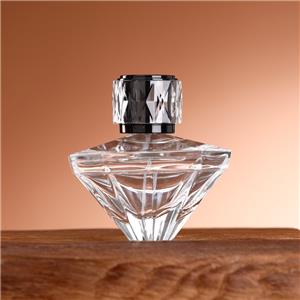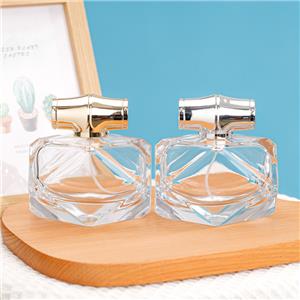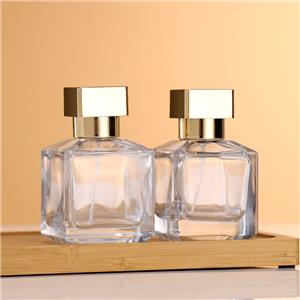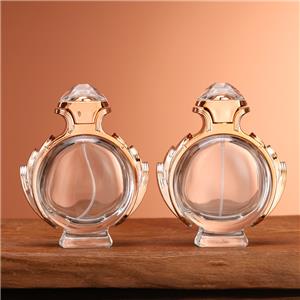Spraying, Printing, and Electroplating: What’s the Difference?
Introduction
When customizing perfume bottles, the decoration process plays a key role in how the final product looks and feels. Among the most common techniques are **spraying, printing, and electroplating**. Each method has its own features, advantages, and ideal use cases. Understanding these differences will help you choose the right technique for your brand.
1. Spraying (Color Coating)
* **Process**: A thin layer of paint or coating is sprayed onto the glass surface, then cured for durability.
* **Appearance**: Offers a wide variety of colors, gradients, matte, glossy, or metallic effects.
* **Advantages**:
* Cost-effective for both small and large orders.
* Flexible color customization.
* Can create unique gradient and translucent looks.
* **Best For**: Brands that want colorful, trendy, or artistic designs on their perfume bottles.
2. Printing (Screen Printing / Transfer Printing)
* **Process**: Ink or decals are applied directly onto the glass surface through screen printing, pad printing, or transfer methods.
* **Appearance**: Perfect for logos, text, and detailed patterns.
* **Advantages**:
* High precision and durability.
* Works well with branding elements such as company name or artwork.
* Cost-efficient for simple designs.
* **Best For**: Adding logos, instructions, or unique decorative patterns to enhance brand identity.
3. Electroplating (Metallization)
* **Process**: A thin metallic layer (such as gold, silver, or chrome) is applied to the glass surface through a vacuum metallization process.
* **Appearance**: Creates a shiny, reflective, and luxurious metallic finish.
* **Advantages**:
* Strong premium effect for high-end branding.
* Extremely durable and resistant to fading.
* Ideal for luxury or limited-edition perfumes.
* **Best For**: Premium perfumes that require a glamorous, mirror-like metallic appearance.
4. Key Differences at a Glance
| Feature | Spraying (Color Coating) | Printing (Logos & Patterns) | Electroplating (Metallization) |
| ----------------- | --------------------------- | ---------------------------------- | ------------------------------ |
| **Main Purpose** | Color effects & style | Branding & graphics | Luxury metallic finish |
| **Customization** | Flexible colors & gradients | Text, logos, detailed designs | Gold, silver, chrome tones |
| **Cost** | Low to medium | Low for simple, higher for complex | Higher (premium process) |
| **Durability** | Good, but can scratch | Very durable | Highly durable & long-lasting |
| **Best For** | Trendy, colorful bottles | Branding and labels | High-end luxury perfumes |
Conclusion
* **Spraying** is best if you want **color variety and design flexibility**.
* **Printing** is essential for **logos, branding, and detailed artwork**.
* **Electroplating** is ideal for **luxury perfumes with a metallic finish**.
✅ Many perfume brands even combine these methods—for example, **a sprayed gradient bottle with electroplated caps and screen-printed logos**—to create a unique, eye-catching packaging design.




